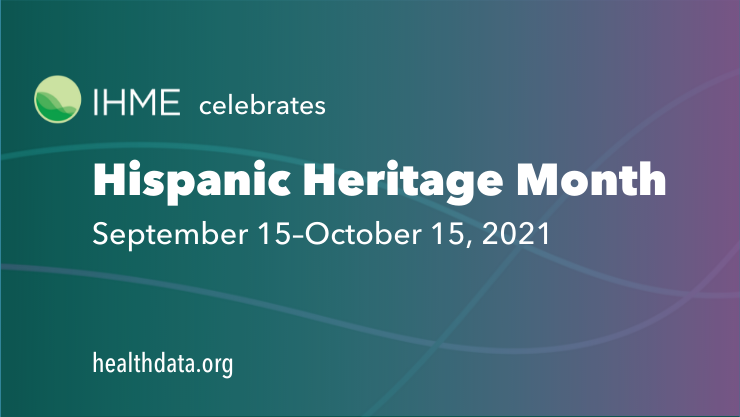
As we celebrate National Hispanic Heritage Month (NHHM) from September 15 to October 15, recognizing and scrutinizing the disproportionate impact that COVID-19 has had on the Hispanic and Latino American demographic is imperative.
According to an analysis by IHME that compares the risk of dying from COVID-19 by race and ethnicity, Hispanic and Latino Americans are more likely to die from COVID-19 than non-Hispanic White Americans, with excess risk higher among younger age demographics.

Currently there is a need to address the disparity between Hispanic and non-Hispanic White populations as the risk of dying from COVID-19 is up to 6.9% higher in the 40 states that have recorded more than 10 deaths among Hispanic people.

For Hispanic and Latino populations, the disparities are highest in DC and parts of the West and Midwest. Notably Texas and California are two states with both high numbers of deaths and very high disparities for Hispanic and Latino populations. Specifically in California, Latino people are 8.1 times more likely to live in high-exposure-risk households than non-Hispanic White people (23.6 percent versus 2.9 percent) and are overrepresented in cumulative COVID-19 cases (3,784 versus 1,112 per 100,000) with risks and outcomes worse for Latino people than for members of other racial/ethnic minority groups.
Generally, Hispanic populations in the US experience a lower risk of all-cause mortality compared to non-Hispanic White populations, but COVID-19 has uniquely hit this community much harder. The elevated risk in Hispanic, Latino, and non-Hispanic Black Americans means that their risk of death at age 50 is equal to the risk of death for a 65-year-old non-Hispanic White American.
This disparity can be attributed to several potential sources, including Hispanic and Latino populations’ increased work exposure during the pandemic. Working-age Hispanic, Latino, and non-Hispanic Black Americans are more likely to die from COVID-19 than non-Hispanic white Americans in the same age group, suggesting that the excess risk may be disproportionately affecting individuals who are unable to work from home.
There are a few opportunities to protect these communities with an elevated risk of exposure by prioritizing lifesaving interventions such as vaccinations, masks, and other PPE at work places and social gatherings.
Beyond these measures, there is an urgent need for new investments in Hispanic health. As noted in a JAMA publication ‘US Health Care Spending by Race and Ethnicity, 2002-2016’, Hispanic people received the least spending of US health care dollars to their proportion of the population as Hispanic patients benefited from 11% of health care spending despite accounting for 18% of the population.
“Latinos in particular often lack access to high-quality health care and are among the least likely of any racial or ethnic group to visit the doctor when they have a medical issue,” said Amelie G. Ramirez, DrPh, director of the Institute for Health Promotion Research and the Salud America! program at UT Health San Antonio. “As a result, they suffer from poorer health outcomes on a range of measures.”
National Hispanic Heritage Month is an opportunity to celebrate the contributions and successes made by generations of Hispanic people but also is an opportunity to examine how to close the disparity gap in the United States. In our commitment to Diversity, Equity, and Inclusion, we at the Institute for Health Metrics and Evaluation, are committed to supporting projects that support health for Hispanic and Latino populations around the globe.
Some of the work produced by the IHME team includes:
-
Evaluation of the Salud Mesoamerica Initiative (Mexico and Central America), a results-based aid project aiming to reduce the health gaps between income in Mesoamerica, specifically in maternal and child health. IHME has conducted the evaluation of this initiative since 2011.
-
Evaluation of the Regional Malaria Elimination Initiative (Central America, Dominican Republic, and Colombia), a results-based aid initiative aiming to eliminate malaria from Mesoamerica. IHME has conducted its evaluation collecting baseline information in 2019 and expects to collect follow-up information in 2022 about the progress in detection, surveillance systems, and treatment of malaria.
-
Mortality in children under 5 in Yucatán, Mexico was an intervention project to improve death certification and health care access to children under 5, with an emphasis on supporting indigenous communities.
-
Prospective Country Evaluation (PCE) of the Global Fund activities to assess the implementation and impact of the Global Fund investments to fight AIDS, TB, and malaria in eight countries, including Guatemala, from 2018 to 2021.